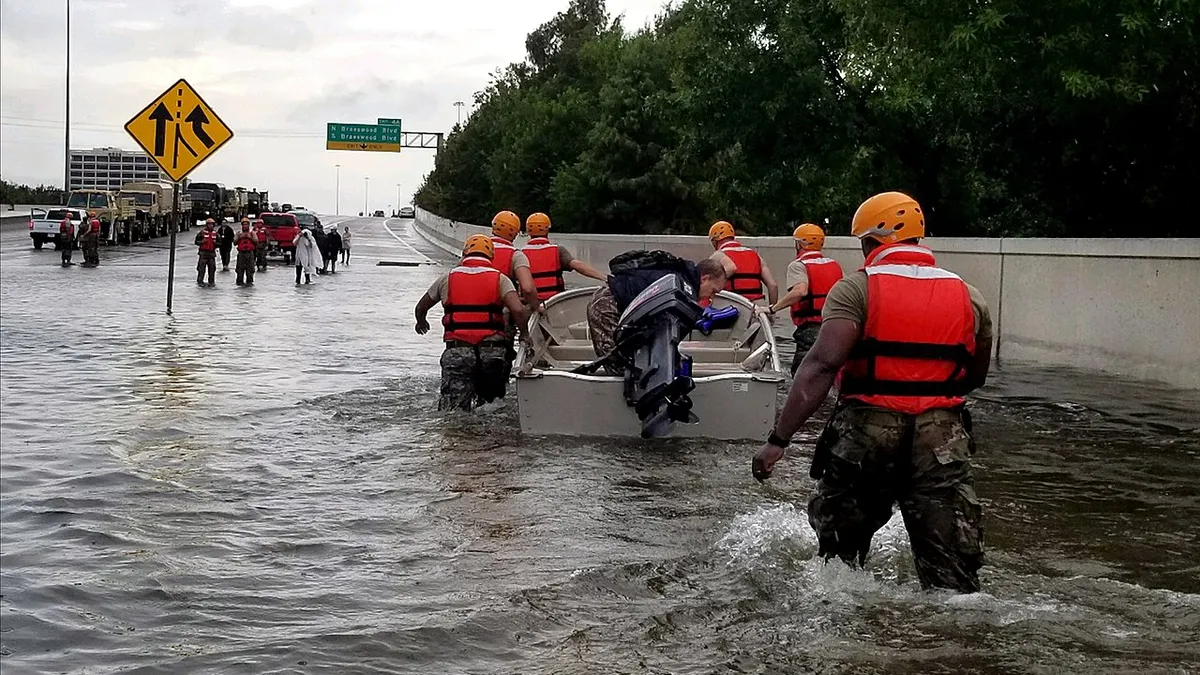Dive Brief:
- International reinsurer Munich RE has projected that worldwide losses due to 2017's string of natural disasters will reach $330 billion, with only $135 billion of those costs insured.
- Hurricanes Harvey, Irma and Maria alone, which left behind $215 billion in damages, made 2017 the costliest hurricane season on record. This year's global losses were almost twice the 10-year, inflation-adjusted average of $170 billion, and insured losses were nearly three times the annual average of $49 billion. U.S. disasters made up 50% of all losses versus its usual 32% share.
- Munich RE officials said the company is not ready to tie these severe weather and other events like earthquakes, floods and wildfires to climate change, but added that their analysts expect similar occurrences in the future.
Dive Insight:
Some regions that have experienced the devastation — and price tag — of natural disasters have already beefed up their building codes and implemented resiliency guidelines in an effort to minimize the consequences of the future events Munich RE referenced in its report.
Post-Superstorm Sandy, The New York City's Mayor's Office of Recovery & Resiliency (ORR) issued climate resiliency guidelines for capital-project construction so that city agencies can reduce the effects of extreme heat, rain and snow, flooding, storm surge and sea-level rise. The Port Authority of New York and New Jersey also published resiliency recommendations back in 2015.
After Hurricane Harvey, Houston's Harris County set forth new regulations for those building in flood zones, excluding projects within the Houston city limits. County officials said the new laws, which went into effect Jan.1, received support from the building industry as more than 30,000 homes flooded as a result of Harvey. In general, new homes and some other types of structures within a 100-year floodplain must be built to 500-year floodplain standards.
Insurance companies could possess the leverage necessary, however, to force property owners to build more resilient structures. Liz Holland, CEO of real estate management and acquisition firm Abbell Associates, told Construction Dive in May that without suitable insurance coverage most commercial undertakings are simply too risky regardless of whether they're in a natural disaster hot zone or not.
According to a study sponsored by the National Ready Mixed Concrete Association, builders' risk and commercial property insurance policy premiums are already higher for wood-framed multifamily buildings than they are for those structures made of concrete because of the latter's ability to resist fire and for its overall durability over long periods of time.














